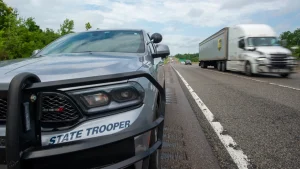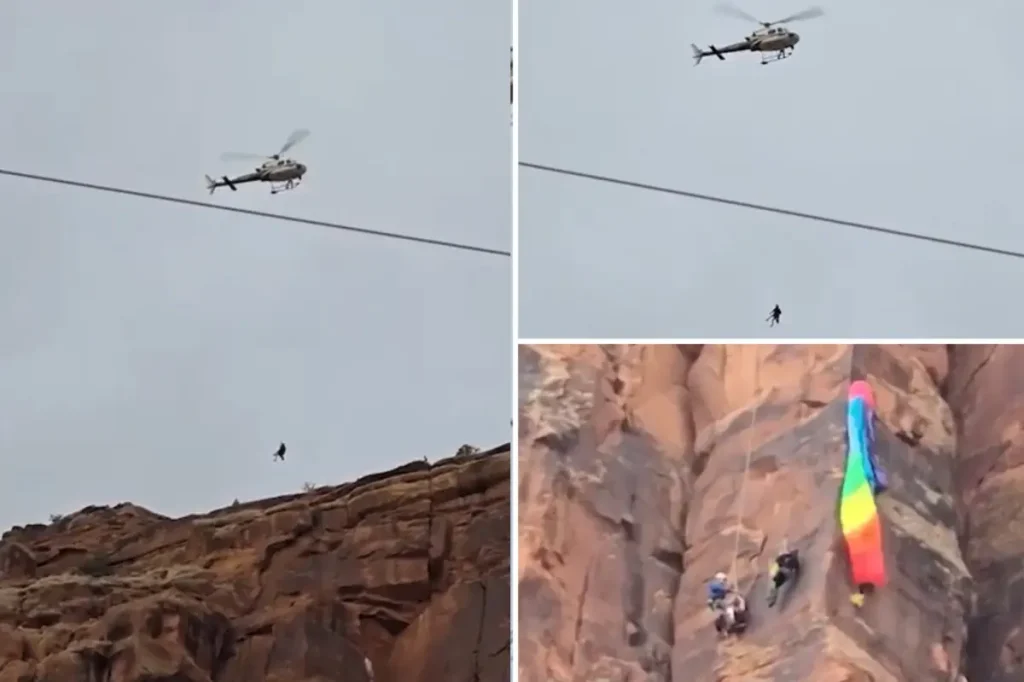Dramatic BASE Jumper Rescue in Utah Canyons
In a heart-stopping rescue operation near Moab, Utah, emergency services personnel demonstrated extraordinary skill and courage as they saved a BASE jumper whose rainbow parachute had become entangled on a canyon face at Kane Creek. The dramatic incident, captured on video by bystander Ashley Corbin and later shared widely across social media, shows the tense moments when rescuers battled wind conditions to reach the stranded jumper clinging precariously to the cliff. The nearly 20-minute video documents a first responder descending from a helicopter, swinging in the gusting winds while attempting to reach the injured adventurer—a vivid reminder of both the thrills and potentially deadly risks associated with extreme sports in the rugged Utah landscape.
The rescue operation began around 1 p.m. when Grand County Emergency Services received the distress call, but it wasn’t until more than two hours later, at approximately 3:15 p.m., that rescuers could finally reach the jumper. According to the Grand County Sheriff’s Department’s Facebook post, the BASE jumper—whose identity remains undisclosed—was successfully rescued despite suffering moderate injuries requiring advanced medical treatment. By 4 p.m., rescuers had managed to hoist the injured jumper from the precarious position on the cliff face to a designated landing zone, bringing the dangerous situation to a successful conclusion despite the challenging circumstances that made the rescue particularly difficult.
The incident highlights the complex relationship between adventure sports and public safety in the Moab area, which has become renowned for its extreme sports opportunities. According to the Moab BASE Access, Utah Chapter, a nonprofit organization, BASE jumping is legal on Bureau of Land Management lands surrounding Moab. However, the organization acknowledges the inherent dangers with a sobering reminder that “BASE jumping is all fun and games until you are smashed up on the talus and need rescue and surgery.” This straight-talking approach reflects the reality that while these activities provide exhilaration and freedom for participants, they can quickly transform into life-threatening emergencies requiring extensive resources and putting rescuers at risk.
In their response to the incident, Moab BASE Access expressed profound gratitude to the Grand County Search and Rescue team for their “heroic efforts,” specifically acknowledging the four BASE jumpers who serve as Search and Rescue team members and participated directly in the rescue operation—a notable intersection of the adventure sports community and emergency services. The organization contextualized BASE jumping risks by stating that “like mountain biking and climbing, BASE jumping is a high-risk activity,” while pointing out that “over the past three years, BASE related incidents have accounted for less than 5% of all SAR calls in Grand County.” This perspective attempts to balance acknowledgment of the sport’s dangers with data suggesting that, proportionally, it doesn’t overwhelm local rescue resources compared to other recreational activities in the area.
The successful rescue operation exemplifies the critical role that local emergency services play in outdoor recreation areas like Moab. In Utah, search and rescue operations fall under the jurisdiction of each county’s sheriff’s office, according to the Utah Search and Rescue Association, creating a decentralized but locally responsive emergency system. Grand County Emergency Medical Services commented on their Facebook page that “while yesterday’s incident gained public attention because it was visible from town—these types of rescues are exactly what we train for and do on a pretty regular basis.” This matter-of-fact statement reveals an important reality: behind the spectacular scenes of rescue that occasionally capture public attention lies continuous, systematic preparation and regular execution of similar operations that often go unnoticed by the general public.
The successful resolution of this dramatic rescue represents more than just one person saved—it embodies the delicate balance between personal freedom and collective responsibility in outdoor recreation. Grand County EMS captured this sentiment perfectly in their social media statement: “It’s a privilege to serve this community alongside such dedicated professionals, and to bring people home safely.” This incident, while harrowing, demonstrates how communities like Moab have developed systems that allow for both the pursuit of extreme sports and the safety nets necessary when things go wrong. The rainbow parachute caught against the red rock canyon face serves as both a striking visual image and a powerful metaphor for the colorful, risky pursuits that draw people to places like Moab, and the solid, dependable rescue systems that catch them when they fall.










